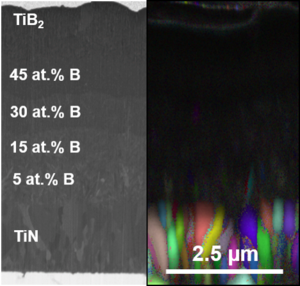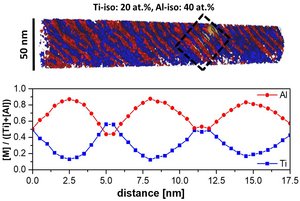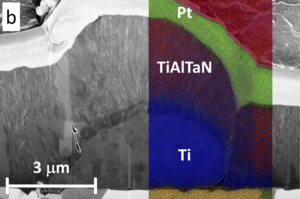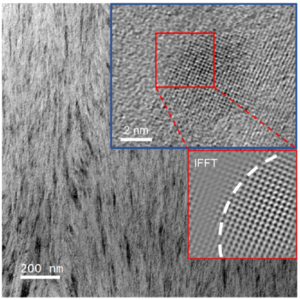CVD Ti(B,C,N) coatings
CVD Ti(B,C,N) coated inserts for milling of titanium alloys
Chemical vapor deposition (CVD) is commonly used to synthesize TiB 2 coatings on industrial scale. TiB 2 coatings are unique among CVD coatings, since they exhibit compressive residual stress while CVD coatings usually exhibit tensile residual stress. That is one but not the only reason why these coatings pose various highly interesting scientific questions. Also, the correlation of deposition parameters and microstructure is not fully understood yet, which makes the development of multilayer-structures or the introduction of additional elements a challenge.
CVD Ti 1-xAlxN coatings
CVD Ti1-xAlxN coated inserts: exploration of application fields
While the growth of Ti 1-xAl xN using physical vapor deposition is state-of-the-art since decades, the synthesis of Ti 1-xAl xN using chemical vapor deposition is still in its infancy. CVD Ti 1-xAl xN coatings exhibit completely different microstructures compared to PVD Ti 1-xAl xN, which results in entirely different properties and thus, different application fields are conceivable. The controlled deposition and tailoring of microstructure of CVD Ti 1-xAl xN as well as the implementation of additional elements is still highly challenging.
CVD α-Al2O3 coatings
CVD α-Al2O3 coated inserts for turning of steel and cast iron
Chemical vapor deposited (CVD) α-Al2O3 coatings are typically grown on a substructure consisting of a TiN diffusion barrier layer, a TiCN base layer and very thin bonding, oxidation and nucleation layers. Each of these layers influences the growth of the Al2O3 top layer. Consequently, the fundamental relationships between deposition process and coating microstructure will be in the focus of investigation. Another topic will be the introduction of additional elements. On the one hand, the feasibility of the introduction of additional elements with respect to available precursors and process control will be investigated. On the other hand the influence of additional elements on the microstructure and consequently on the coating properties and cutting performance will be evaluated.
PVD nitride coatings
CAE nitride coated tools for milling and turning of steels
Ti1-xAlxN-based coatings have been deposited using cathodic arc evaporation (CAE) since decades. However, there is still potential for further improvements for example by optimizing the coating composition and architecture. In addition, new alternative coating materials like Cr1-xTaxN will be studied.
PVD Ti(Al)SiN coatings
CAE Ti(Al)SiN coated tools for turning of stainless steels and Ni-base alloys
Ti(Al)SiN coatings exhibit a high hardness of above 40 GPa, due to their nanocomposite structure consisting of a nanocrystalline phase embedded in an amorphous tissue phase. In addition, this coating system is characterized by a high thermal and oxidation stability. The origin of the typically exceptionally high compressive residual stresses of Ti(Al)SiN coatings is still unclear and topic of current investigations.
PVD ZrN-based coatings
CAE ZrN-based coated tools: exploration of application fields
ZrN-based coatings exhibit an alternative to the widely used TiN-based coatings, but the two systems can also be combined in multilayer architectures. Since both systems crystallize in the face-centered cubic structure and the lattice mismatch is 7 %, coherent interfaces with high coherency strains are formed between the individual TiN/ZrN layers, which positively affects the coating properties. The investigation of these interfaces requires the complementary application of advanced high resolution characterization methods.





